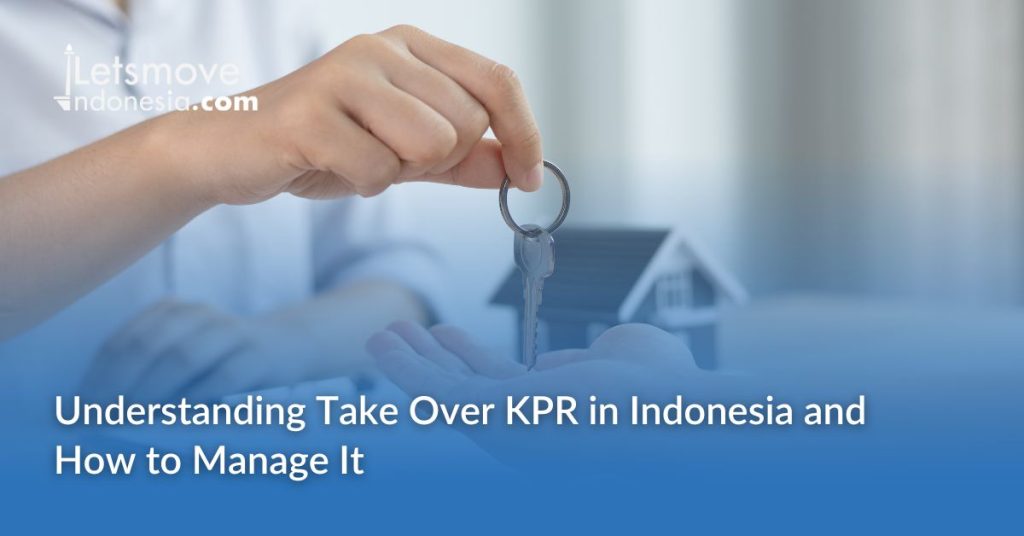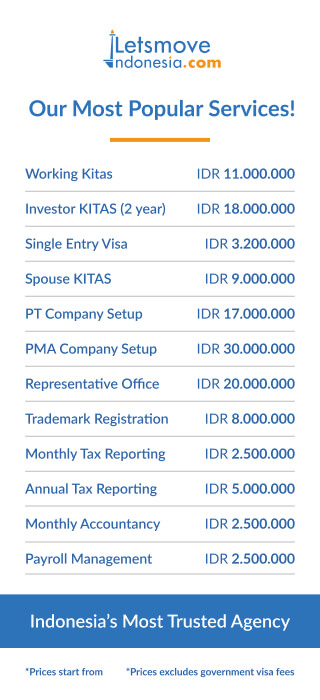For many people, a house is a worthy investment choice. However, considering its high cost, not many can afford to buy a house outright. Especially for those who are just starting to work or have a family, the extra funds for purchasing or even paying off home instalments might not always be available. Hence, the solution of purchasing a house through a Home Loan (KPR) or mortgage becomes one of the viable paths.
Through a KPR, you only need to pay a relatively small instalment for the house every month. Of course, this is adjusted according to your income and repayment capacity. Thus, you don’t need to save for a long time to achieve your dream money. Just imagine how long you would have to save and the amount you’d have to save every month if the house prices keep rising every year. KPR remains a suitable solution for buying a house.
Speaking of KPR, there’s a term called “take over of KPR” in the context of purchasing a house. So, what is take over of KPR? Let’s understand and learn how to easily manage it.
What is Take Over KPR?
Simply put, take over of KPR or Remortgage is the process of transferring an existing KPR. In terms of buying and selling a house, take over KPR means purchasing a house that is already under KPR by its previous owner. This means you might not need to establish a new KPR agreement with the bank for a new property; instead, you continue with the existing KPR. There are various reasons why many people choose to take over KPR rather than initiate a new KPR.
The most common reason for choosing to take over KPR over a new KPR is the possibility of obtaining a lower interest rate. Furthermore, people often opt to take over KPR when they want to buy a larger house but aren’t in a hurry and want to match their needs. Other reasons could include tight financial situations or various other considerations.
Similar to the regular KPR process, executing a take over also involves formal agreements in the form of written contracts. This is done to ensure that neither party is disadvantaged. Such considerations are crucial, especially since a house is a long-term property with a significant value.
Types of Take Over of KPR
The take over process can be classified into several types based on the parties involved, the agreement process, and the security aspects. Here are the types of take over KPR that you should know.
1. Inter-Bank Take Over
The first type is inter-bank take over, which involves transferring a KPR loan from one bank to another. This type of take over can be done by individuals who are not involved in buying or selling a house but want to move their KPR loan from one bank to another.
Usually, people transfer their KPR from one bank to another to obtain a lower interest rate than what the original bank offers. This way, they can repay the total KPR loan at a lower cost than initially estimated.
The required procedures and criteria are not particularly difficult. If you have a good credit history, a strong repayment capacity, and meet requirements not far from those of your initial KPR application, the process should go smoothly.
2. Take Over of Home Purchase
Whether you’re a buyer or a seller, you can execute a take over for an outstanding KPR loan. Taking over a KPR loan for a home purchase involves transferring the responsibility of instalment payments from one party to another. Besides the buyer and seller, a third party is involved in this process, which is the fund provider or bank. While the process is slightly more complex due to the involvement of three parties, it’s not difficult at all if you’ve prepared everything in advance.
The process of purchasing a home through take over is not significantly different from the standard KPR process. You need to prepare all the required documents as you would when applying for a regular KPR. Essentials such as identity verification and income documentation need to meet the bank’s standard requirements. Additionally, when visiting the bank, ensure that the person transferring the KPR loan (the home seller) accompanies you.
Once the administrative process and credit assessment analysis are completed by the bank and approved, the bank will issue the Sale and Purchase Deed (AJB) and the Power of Attorney to Grant Mortgage Rights (SKMHT), allowing you to proceed with the KPR.
3. Informal Take Over of KPR
Another type of take over that occurs in practice is the informal take over. If the previous two types of take over involve formal processes and bank participation, an informal take over KPR typically occurs solely between the buyer and seller without involving the bank as the KPR lender. Considering the absence of bank involvement, the validity and security of the transaction are at higher risk.
Informal take over KPR is usually chosen when the buyer doesn’t want to establish a KPR agreement with the bank for various reasons, such as avoiding the costs of creating a KPR agreement and others. Normally, the loan transfer agreement is only made in front of a notary, including a statement that the property certificate will be handed over to the buyer at the end of the loan term.
In the standard KPR procedure, the bank would issue a property ownership certificate in the name stated in the KPR agreement with them. The bank wouldn’t issue the certificate to someone else even if the person who is actually repaying the instalments until the end of the term isn’t the one named in the KPR agreement with the bank. Therefore, if you undertake an informal take over of KPR, the property certificate will be transferred not to you, but to the name listed in the KPR agreement. Despite making an agreement in front of a notary, it might still be challenging to manage further steps if there are issues with the transfer of certificates to the buyers.
Costs Involved
Irrespective of the type of take over you opt for, there will always be associated costs. To make an informed decision on the most suitable take over KPR, consider the following cost-related factors:
Inter-Bank Take Over
To transfer a KPR loan from your current bank to a new one, the process involves applying for a new KPR loan with the new bank and then settling the previous KPR with the new bank’s funds. In this process, there are costs associated with the new KPR and penalties for the old KPR. To navigate this process, you should first determine the penalty amount from your old bank and consider how much ceiling you need from the new bank.
The penalty is a fee you need to pay for repaying the KPR loan earlier than originally agreed. You can find this penalty amount in the KPR agreement with your old bank. If you’re unsure, you can directly ask the bank. Generally, the penalty fees imposed by banks range from 1% to 3% of the remaining debt. However, the exact amount depends on the specific bank.
In addition to paying penalties, you’ll also need to cover the costs of the new KPR with the new bank. These costs typically include appraisal fees, notary fees, the Deed of Mortgage (APHT), Power of Attorney to Grant Mortgage Rights (SKMHT), bank commissions, insurance, and processing fees. Generally, the combined costs amount to around 7% of the loan ceiling. Yet, this again depends on the chosen bank.
Home Purchase Take Over
In essence, the costs involved in purchasing a home through a take over aren’t significantly different from an inter-bank take over, as long as the take over process is done formally and adheres to the rules. You will incur penalties for the old bank and KPR-related costs for the new bank. These costs can be flexible based on agreements between the buyer and seller. Additionally, you’ll need to pay the notary fees for certifying the take over agreement.
Informal Take Over KPR
Unlike the previous two types, in the case of an informal take over, you won’t need to pay penalties or KPR-related costs to the new bank. As credit transfer usually occurs based on agreements made in front of a notary, you would only need to cover the notary fees. While this may seem cost-effective and affordable, an informal take over of KPR comes with its own risks as mentioned earlier.
Apply for Home Loan Refinancing with LetsMoveIndonesia
With an understanding of the aforementioned types of take over KPR, you can now select the safest and most beneficial approach for you. To maximize your benefits, consider applying for a takeover KPR or home loan refinancing through LetsMoveIndonesia Home Loans.
LetsMoveIndonesia Home Loans offer several advantages, including programs suitable for various financing needs such as property purchases, loan transfers, or KPR takeovers. Moreover, there’s even an option for loan top-ups. You can rest assured, as LetsMoveIndonesia offers competitive fixed interest rates, along with a quick and easy process.
Feel free to explore LetsMoveIndonesia Home Loans and its benefits to find the optimal solution for your KPR needs.
Found this article interesting? Then check out our other useful articles about home loan mortgages here!
Exploring Possibilities of The Expat Mortgage in Indonesia
Your Path to Property Ownership: Essential Steps for Obtaining Mortgage in Indonesia
Decoding Indonesian Mortgage Products: The Essential Guide for Homebuyers
Top Banks that Partnered with LetsMoveIndonesia for Mortgage
Get Your Desired Mortgage with LetsMoveIndonesia: What You Need to Know











